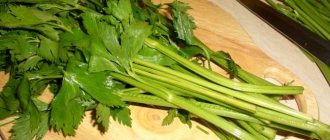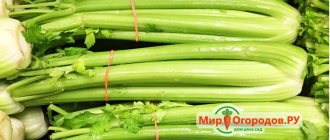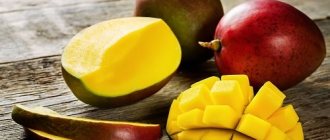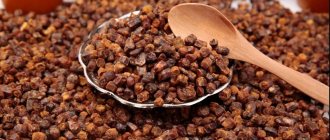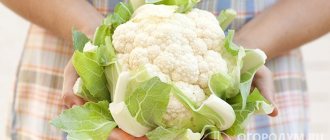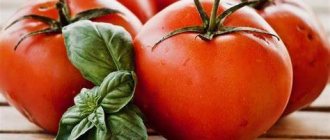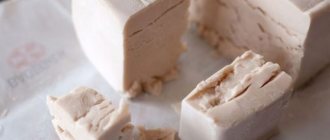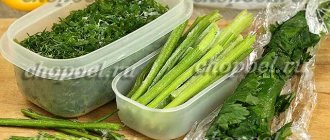The winter season of the year is a period when it is quite problematic to find fresh stalked or leaf celery on sale. Therefore, housewives stock up on healthy vegetables in the fall, purchasing them at markets and agricultural fairs. The question of how to properly store root vegetables and green mass worries many celery lovers.
How to preserve the properties of petioles and leaves
In the open air, the greens of the vegetable quickly wither and the petioles cease to be elastic. To prevent these parts of celery from losing their properties, immediately after purchasing or harvesting:
- Rinse the plant in running water.
- Lay out on a paper towel to dry.
- Wrap in food foil.
- Place in the fruit and vegetable drawer of the refrigerator.
The foil will help keep the leaves and petioles fresh for up to 10 days. Celery greens wrapped in plastic wrap will wilt in 3 days.
You can also ensure the preservation of the properties of the green mass of a vegetable in the following way:
- Cut off the celery root.
- Fill the jar 1/3 full with cool water and place the stem in it.
- Place it in a secluded, dark place in the kitchen.
The shelf life of celery in a jar is about a week. An important condition is to change the water daily and lightly trim the stem.
Use a glass of water
Another method of using water is to cut off the base of the stems and immerse them in a glass of water. Celery stored this way can “last” in the refrigerator for 1-2 weeks. You just need to leave the entire bunch of celery in a container of water in the refrigerator. For this you will need a large glass or jug. When storing celery, do not place it in the coldest parts of your refrigerator because it can easily freeze. You will need to change the water at least every few days, but using this method will keep it crispy.
The money tree pleases with lush flowering: my secret is in caring for the leaves
It’s good to wash often: myths about shampoo and hair care that only harm
A Brazilian travels 36 km by bike every day to take his loved one home.
Cellar storage
It is recommended to keep only hard celery tubers in the cellar, without damage, cracks, and with the least knobbiness. Fewer cones on the surface of the root crop will allow it to be better preserved. A small vegetable quickly loses its juices and is stored worse.
Before sending the root crop to the cellar, it is not washed or trimmed, otherwise it will spoil faster. The only thing is to cut off the tops, leaving 1 cm petioles. If soil has stuck, it is carefully cleaned off with your hands.
There are two ways to store celery in the cellar:
- In clay. The substance is diluted with water to obtain a mass similar in thickness to sour cream. Then each vegetable is coated with it. They are laid out in a warm place until the clay dries, after which they are put away in the cellar, laid out on shelves. Carrots are also stored in such a mash jar.
- In sand. Dry sand is poured into plastic or wooden boxes 1/3 full. Place the root vegetables at intervals of 1–2 cm. Cover the top with sand so that the vegetable is completely covered. The shelf life of vegetables in the cellar at a temperature of no more than +12°C is from 4 to 6 months.
To preserve celery until spring, each plant should be dug up, leaving as much soil as possible on the roots. Then transfer it to the cellar or basement, plant it in a box with sand.
The petioles will remain fresh in the cellar for 2–4 weeks if they are wrapped in foil and several layers of plain paper. Leaves cannot be stored in this way.
In a cellar or basement, forks of broccoli and heads of Chinese cabbage are well preserved. Only the storage methods are very different.
Features of storing celery root
When properly stored, celery roots retain their taste and marketability for 3-6 months. The period largely depends on the variety. For winter harvesting, choose mid- or late-ripening species with large root crops. It is desirable that they are not prone to forming lateral roots; the tubers have a smooth bark. And of course, they did not crack or form internal voids during the growth process. Here are several varieties of root celery suitable for winter storage:
- Egor. A mid-season variety of root celery, the biological maturity of which occurs within 160-170 days. The variety is suitable for cultivation throughout Russia. Root vegetables weighing about 450 grams are covered with smooth, light gray bark. The pulp is white, without voids or streaks, with a spicy taste.
- Albin. It is this type of root celery, according to breeders, that can be stored for up to six months. Even though it produces a small number of fine lateral roots on the bottom of the tuber. It grows to a diameter of 15 cm and a weight of 500-600 grams. The pulp is very dense, whitish-cream in color when cut, and has a bright taste and aroma. The variety also belongs to the mid-season variety and even in the climatic conditions of Siberia it will have time to ripen before the onset of cold weather.
- Root celery President is considered one of the best varieties for storing for the winter. Large round fruits, with smooth grayish bark and elastic snow-white pulp. Due to the unpretentiousness and drought resistance of the variety, root crops are not susceptible to the appearance of cracks and voids. The average weight of tubers is 400-600 grams.
- Root celery Royal Night is one of the modern species. It forms round-oval tubers. With proper care, their weight can reach 1 kg. But more often there are fruits weighing 600-800 grams. The bark is tuberous, slightly rough, but without lateral roots. Has a light green tint. The pulp is cream-colored, juicy, aromatic, and piquant in taste. Ripens within 150-160 days from the moment the first shoots appear.
- Anita belongs to the late varieties. Its maturation lasts up to 200 days. However, the root crops of the variety are frost-resistant, and lowering the temperature to 4 degrees minus will not affect the storage period. Tubers with beige bark and white flesh can be stored for up to 5-6 months. It is distinguished by its large fruit, high commercial and taste qualities. This variety of celery is often used for industrial production.
Both mid-season and late varieties are suitable for growing and storing root celery in the middle zone. They will have time to ripen before the cold weather begins. In regions with colder climates, it is worth giving preference to species that ripen in 5-6 months.
Freezing: roots, petioles, leaves
Like most vegetables and herbs, celery can also be frozen for the winter. They do this as follows:
- Cut the petioles into large pieces, pour boiling water over them or blanch them, and let the moisture drain. Place in small bags and place in the freezer. The plant frozen this way is convenient to add to soups and main courses.
- Chop the leaves, pour into ice cube trays, fill with water and place in the freezer. Once the cubes have hardened, transfer them to bags or a container and leave them in the freezer again. Using celery cubes is ideal for preparing a variety of sauces.
- You can freeze the leaves and petioles of the vegetable whole by packing it in a container and tightly closing the lid.
For freezing, root vegetables are finely chopped or grated, then placed in several bags and placed in the freezer. Thawed celery root partially loses its taste, so it is better to use it for making soups and main courses.
Best time to harvest
Timely harvesting ensures that it will last a long time and will not lose its aroma and nutrients. When to harvest and how to store celery root? Let's figure it out in order.
Do not rush to remove vegetables from the garden. The longer it stays in the ground, the better. This allows the root to acquire the following qualities:
- increase in size and mature;
- covered with a hard, elastic skin.
The question of when to harvest celery is a very important one. A mature root crop is ready for transportation and storage; it is not afraid of damage, spoilage, or rotting.
The timing of digging is individual and depends on the plant variety and the climatic conditions of the region. On the one hand, you need to wait until the root crop is completely ripe. On the other hand, cleaning during the first frost is unacceptable, because frozen specimens will quickly deteriorate.
Practitioners advise cutting off the shoots and lower leaves of celery about a month before the expected harvest, so that it can then ripen without them.
Salting for the winter
For the winter, celery can not only be frozen, but also pickled. With this method, the properties of the vegetable are preserved for a long time.
Salting is not difficult:
- Prepare a jar with a lid.
- Wash the celery leaves and stalks, remove the yellow parts, and chop finely.
- Mix the chopped herbs with salt in the proportion of 200–250 g of salt for every 1 kg of celery.
- Place the salted herbs tightly in the jar. You should leave some space for the juice.
- Close the jar hermetically. The choice of lid depends on where you plan to store the container with pickling: if in the refrigerator, then choose a nylon lid; if in a cellar or pantry, roll it under a tin.
When using this vegetable in the preparation of various dishes, you need to add significantly less salt.
Salting celery is done less often than freezing or drying. Storing garlic in salt is more popular. But the harvesting technology is completely different.
When to Harvest Celery Roots for Storage
The period for harvesting and storing root celery is in September and October. It depends on the timing of ripening and weather conditions. If the weather is warm and dry, the harvest is delayed somewhat. The lower leaves are cut off from the rosette of root celery, and the tubers are left in the soil.
The fact is that root vegetables grow until the first frost. They themselves are still ripening in the garden, and their bark becomes coarser, which significantly extends the shelf life of vegetables. But if frosts are predicted, then there is no way to delay harvesting.
Root vegetables caught in frost will not be stored for long. Therefore, when choosing varieties, you must pay attention to the ripening time and their frost resistance. And don’t delay harvesting if weather forecasters promise a sharp cold snap.
Harvesting time for root celery in the Moscow region and regions
They begin to harvest root celery from ridges in the Moscow region at the end of September or the first half of October. For the northwestern regions, the time is chosen in the last ten days of the first month of autumn.
In Siberia and the Urals they closely monitor the weather forecast. It may be necessary to harvest in mid-September.
How to peel celery root: a few tricks
So that cleaning the root part of the vegetable does not take much time, you should choose the right product when purchasing.
- If the root is soft, light and deforms when pressed, it is not worth buying. It has been stored at high temperatures for too long, it will be difficult to clean, and it is not suitable for salads at all.
- As a rule, you can always find celery on the shelves with a minimum number of “eyes” and irregularities. This one is not only quick to clean, it is also profitable from a financial point of view: much less cleaning, much more useful ready-to-use product.
- The root has quite a lot of weight with a small size, so it is difficult to use it right away. If you don't need all the celery right away, it's best to cut and peel the amount you need first, and store the rest in the peel.
Selection and quality control
When the harvest is harvested, they begin to check the quality and sort the root crops. Select the best samples that will easily retain their aroma and taste until spring.
Signs of a quality product:
- the color of the peel should be uniform, without spots, knots or yellowness;
- the top should not be loose or soft; if you come across such a root, throw it away - it is not suitable for storage and will soon begin to rot;
- When pressed, the pulp should be elastic, firm, and not flaccid and soft;
- the sound when tapping should be clear; if he is deaf, it means there are voids inside.
After selecting root celery for the winter, you can begin storing it. If you haven't cut the tops before, do it now. Cut the leaves with cuttings at an angle, leaving about 2-3 cm.
During the pruning process, try not to touch the apical bud. Without it, the vegetable will quickly deteriorate.
Beneficial features
Crispy petioles and tubers are a rich source of fiber, which is necessary to normalize metabolic processes, reduce blood cholesterol and improve digestion. Additionally, the vegetable provides a surge of strength, a release of energy, and helps withstand intellectual stress.
Celery is also used in the prevention and treatment of many diseases of the body:
- Sleep disorders . Just 1 tbsp is enough. l. plant juice to improve sleep quality.
- Osteochondrosis . Celery is used in the form of juice.
- Menstrual pain . Drinking 1/3 cup of the plant's juice at the beginning of the day before meals helps women feel much better and remember to have fun these days.
- Magnesium deficiency . The vegetable is rich in this microelement and contains it in an easily digestible form. It is enough to eat celery regularly to preserve the beauty of your nails, hair and teeth. Thanks to the proper amount of magnesium, it is possible to remain calm in any situation, maintain sharp attention and memory, and prevent stomach ulcers, diabetes and heart disease.
- Joint stiffness . Celery contains sodium, a deficiency of which with excess calcium causes joint stiffness. An infusion from the plant allows you to stop the hardening of the tissues around the joint and, if possible, restore its mobility.
- Elevated glucose levels in diabetes. Take 60 grams of celery infusion three times a day to reduce glucose levels.
- Kidney diseases . Inflammatory processes and kidney stones are feared by steamed celery seeds. Before starting treatment, it is worth obtaining permission from a doctor, because the movement of a large stone can cause serious harm to a person, and he will not be able to get out on his own. Bleeding will require urgent surgical intervention.
- Prostatitis . Thanks to celery, it is possible to relieve pain during an exacerbation, as well as restore sexual function and improve the patient’s quality of life, reducing the manifestation of symptoms of a chronic disease to a minimum.
Celery is also used in the prevention and treatment of many diseases of the body:
